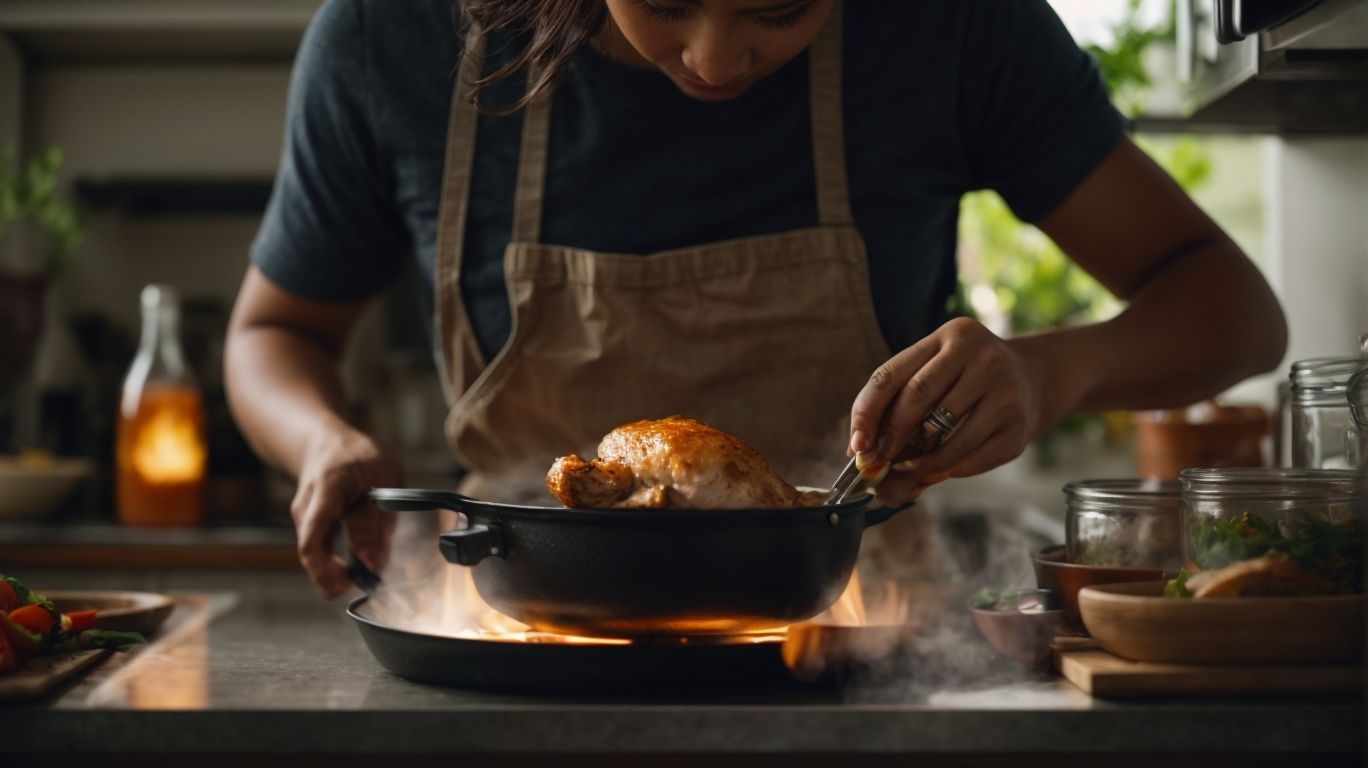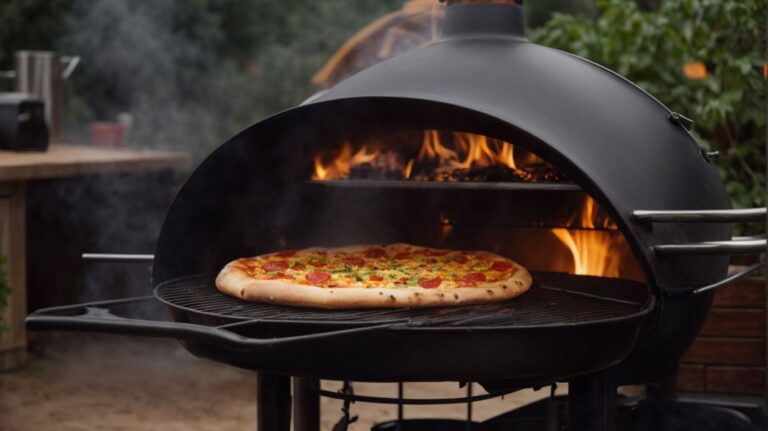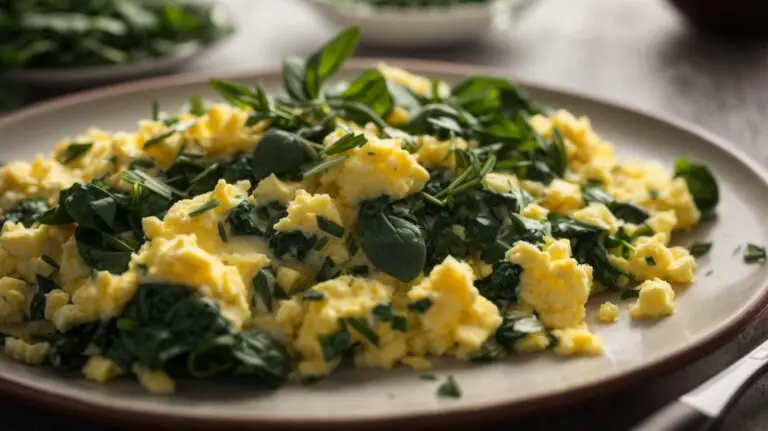How to Cook Chicken After Gallbladder Surgery?
Are you recovering from gallbladder surgery and wondering how to properly cook chicken? Look no further!
In this article, we will discuss the importance of cooking chicken correctly post-surgery, how to prepare chicken for cooking, the best cooking methods for chicken, delicious recipes to try, and essential tips for cooking chicken safely.
Whether you’re baking, boiling, grilling, slow cooking, or stir-frying chicken, we have you covered.
Stay tuned for mouth-watering recipes and expert advice on cooking chicken after gallbladder surgery.
Key Takeaways:
What is Gallbladder Surgery?
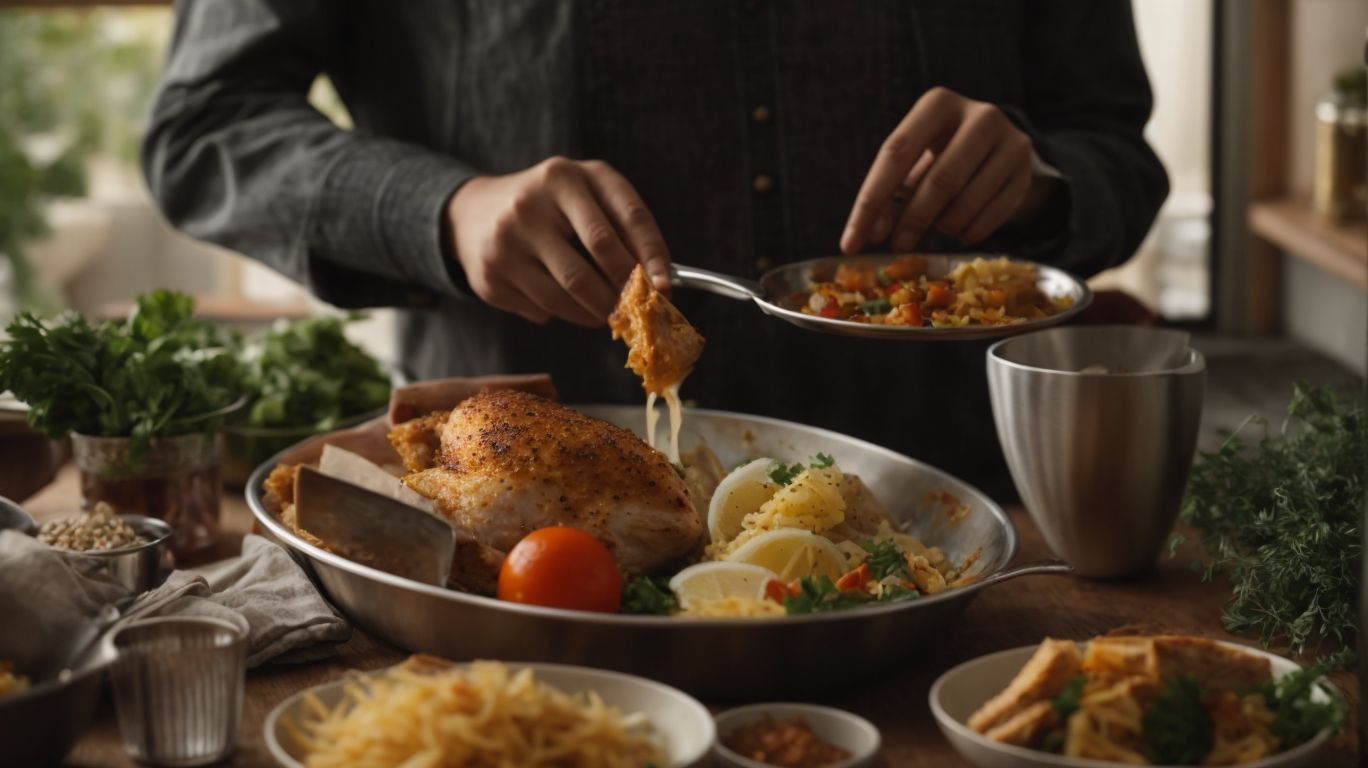
Credits: Poormet.Com – Henry Taylor
Gallbladder surgery, also known as cholecystectomy, is a medical procedure performed to remove the gallbladder, a small organ located beneath the liver that stores bile.
The gallbladder plays a crucial role in the digestive system by storing bile produced by the liver. Bile helps in the digestion of fats by breaking them down into smaller molecules. When issues such as gallstones or inflammation arise, the gallbladder may need to be removed through surgery to alleviate symptoms and prevent complications.
After the gallbladder is removed, the bile produced by the liver flows directly into the small intestine, which can affect digestion and nutrient absorption. Patients undergoing gallbladder surgery are often advised to make dietary adjustments to support their digestive health and manage the changes in bile flow.
What Causes Gallbladder Problems?
Gallbladder problems can arise due to various factors such as obesity, gallstones, or issues with the bile ducts, leading to symptoms like abdominal pain, indigestion, and nausea.
Obesity is a significant risk factor for gallbladder issues, as excess body weight can lead to an increased production of cholesterol in the bile, contributing to the formation of gallstones. Gallstones, small solid particles that form in the gallbladder, can obstruct the flow of bile, causing pain and discomfort.
In some cases, underlying conditions like diabetes or a family history of gallbladder disease can also increase the likelihood of developing problems with this organ. When the gallbladder struggles to empty properly or when there are issues with the bile ducts, digestive symptoms may manifest, including bloating, gas, and diarrhea.
What Happens During Gallbladder Surgery?
During gallbladder surgery (cholecystectomy), a surgeon removes the gallbladder to alleviate issues with bile flow and prevent further complications.
When the gallbladder is diseased or has gallstones that obstruct the bile ducts, the normal process of bile secretion and storage is disrupted. Bile, produced by the liver and stored in the gallbladder, aids in the digestion and absorption of fats in the small intestine. Removing the gallbladder redirects bile flow directly from the liver into the small intestine, ensuring continued digestion without the need for gallbladder storage.
Not having a gallbladder does not significantly impair digestion or overall health in most individuals. In fact, the benefits of the operation usually outweigh the risks, especially when recurrent gallstone-related issues are a concern.
Why is it Important to Cook Chicken Properly After Gallbladder Surgery?
Cooking chicken properly after gallbladder surgery is crucial to ensure easy digestion, minimize potential discomfort, and adhere to recommended dietary guidelines for post-operative care.
Opting for lean cuts of chicken, such as skinless breasts or thighs, is highly advised for individuals recovering from gallbladder surgery.
Protein-rich and low-fat poultry options can provide essential nutrients without burdening the digestive system. It is essential to avoid fried or heavily seasoned chicken preparations that may trigger digestive issues.
Grilled, baked, or poached chicken dishes are generally considered gentler on the stomach and better suited for post-operative recovery. Incorporating anti-inflammatory ingredients like ginger, turmeric, or fresh herbs into chicken recipes can aid in reducing inflammation and supporting the healing process.
Following gallbladder-friendly cooking methods and choosing suitable ingredients can contribute significantly to a smooth recovery and ensure that your meals are not only delicious but also conducive to your healing journey.
How to Prepare Chicken for Cooking After Gallbladder Surgery?
Preparing chicken for cooking after gallbladder surgery involves selecting lean cuts, incorporating high-fiber ingredients, and exploring flavorful options like teriyaki salmon or honey garlic salmon for added variety.
In terms of choosing lean cuts of chicken post-surgery, opt for skinless breasts or tenderloins to reduce the intake of saturated fats. To add a fiber boost to your dish, consider marinating the chicken in low-fat yogurt mixed with fresh herbs and spices. Pairing the chicken with a side of quinoa salad or roasted vegetables can further enhance the nutritional value of the meal. Experiment with different seasoning blends and cooking methods such as grilling, baking, or stir-frying to keep your meals exciting and delicious.
How to Choose the Right Type of Chicken?
Selecting the right type of chicken post-gallbladder surgery involves opting for lean cuts, avoiding fatty preparations, and considering alternatives like maple glazed salmon for added flavor without excess fat.
In terms of selecting the right protein sources after gallbladder surgery, it’s essential to focus on dishes that are gentle on the digestive system and promote overall well-being. Opting for low-fat options like chicken breasts or turkey cutlets can help reduce the risk of digestive discomfort and aid in the healing process. Incorporating flavorful substitutes such as maple glazed salmon not only adds variety to your meals but also provides essential nutrients like Omega-3 fatty acids. By choosing these healthier alternatives, individuals can enjoy delicious meals without compromising their dietary restrictions.
How to Thaw Chicken Safely?
Safe thawing practices for chicken post-gallbladder surgery involve methods like refrigeration, cold water immersion, or microwave defrosting, ensuring compliance with dietary restrictions such as clear liquid or BRAT diets, and preparing options like baked chicken breasts.
When thawing chicken after gallbladder surgery, it is crucial to follow these methods to prevent any foodborne illnesses. Refrigeration is the safest method, allowing a gradual thawing process that maintains the chicken’s quality. Alternatively, cold water immersion can speed up the process if the chicken is sealed in a leak-proof bag. Microwave defrosting is faster but requires caution to avoid partial cooking.
Consider the dietary guidelines post-surgery, opting for low-fat, high-protein options like skinless chicken breasts. Season with gentle herbs and spices to enhance flavor without risking digestion issues. Ensure thorough cooking to kill any bacteria and serve with steamed vegetables for a balanced meal.
What are the Best Cooking Methods for Chicken After Gallbladder Surgery?
Optimal cooking methods for chicken post-gallbladder surgery include baking, boiling, grilling, slow cooking, and stir-frying, allowing for easy digestion, portion control, and management of conditions like bile acid diarrhea.
When considering baking , it is a gentle method that helps retain moisture in the chicken, promoting easier digestion.
Boiling chicken can be advantageous as it reduces the amount of added fats and oils, aiding in portion control and preventing potential gastrointestinal distress.
Grilling offers a flavorful option with reduced fat content, making it suitable for those watching their calorie intake post-surgery.
Slow cooking is beneficial for breaking down tough fibers in chicken, enhancing digestibility and minimizing discomfort.
Stir-frying chicken quickly in a small amount of oil can provide a tasty option while ensuring efficient portion sizing.
Baking
Baking chicken after gallbladder surgery is a healthy choice as it retains moisture without added fats, making it suitable for individuals following dietary recommendations, including those on sugar restrictions or embracing a plant-based diet.
One of the key advantages of baking chicken post-gallbladder surgery is its ability to preserve nutrients and flavor, creating a delicious and healthful meal option. Being a lean protein source, chicken promotes satiety and helps in muscle repair and maintenance while being gentle on the digestive system.
This method of cooking ensures that the chicken remains tender and juicy, avoiding the need for excessive oils or butter that can trigger discomfort or digestive issues in individuals recovering from cholecystectomy.
Baking chicken aligns with plant-based dietary preferences by offering a versatile protein option that can be paired with various vegetables, grains, and legumes, enhancing the overall nutritional profile of the meal.
Boiling
Boiling chicken after gallbladder surgery is a simple and effective method that preserves the natural flavors of the meat, making it a suitable choice for individuals avoiding alcohol, focusing on soluble fiber intake, or incorporating whole grains into their diet.
This gentle cooking technique helps in breaking down the protein in chicken, making it easier to digest and less likely to cause discomfort for those with sensitive digestive systems. By boiling chicken, you can ensure that it remains tender and moist, as the slow cooking process prevents the meat from drying out, creating a juicy and flavorful result.
For individuals following a post-gallbladder surgery diet, boiled chicken is a versatile ingredient that can be enjoyed in various ways, such as adding it to salads, soups, or sandwiches, providing essential protein without the added fats that may trigger digestive issues.
Grilling
Grilling chicken after gallbladder surgery imparts a smoky flavor and attractive grill marks while promoting healthy eating habits through increased fiber intake, ideal for individuals managing conditions like sphincter of Oddi dysfunction and seeking guidance from a dietitian.
Chicken, rich in protein and B vitamins, when grilled, provides a delicious option that aids in the healing process post-surgery. Grilling helps retain the natural juices of the chicken, enhancing its taste without added fats, making it easier on the digestive system. This cooking method lends a depth of flavor that can be customized with various seasonings and marinades to suit individual preferences. For those with specific digestive issues, such as sphincter of Oddi dysfunction, grilled chicken offers a lighter alternative that is gentle on the stomach.
Slow Cooking
Slow cooking chicken post-gallbladder surgery allows for tender, flavorful dishes without excessive use of high-fat ingredients, making it a convenient choice for incorporating fiber-rich additions into meals tailored for post-cholecystectomy dietary needs.
One of the significant advantages of slow cooking chicken after gallbladder surgery is the ability to lock in moisture and tenderness, resulting in a delicious and easy-to-digest meal. The gentle cooking process breaks down the proteins in the chicken, making it easier for the body to process while still maintaining its essential nutrients. Slow cooking allows for the flavors to meld together, enhancing the overall taste of the dish without the need for heavy seasoning.
Stir-frying
Stir-frying chicken post-gallbladder surgery offers quick, flavorful meals that can be customized with whole grains for added nutrition, catering to individuals managing irritable bowel syndrome and seeking professional guidance from a dietitian.
Stir-frying chicken is an efficient cooking method that not only retains the essential nutrients in the chicken but also helps in managing the dietary restrictions that often follow gallbladder surgery, promoting digestion and ensuring a well-balanced meal.
The speed of stir-frying makes it perfect for those with busy schedules and dietary needs, allowing for quick meal preparation without compromising on taste or nutritional value.
By incorporating whole grains, such as brown rice or quinoa, with stir-fried chicken, individuals can enhance their fiber intake, aiding in digestion and promoting gut health, especially crucial for those with sensitive digestive systems like individuals recovering from gallbladder surgery or dealing with IBS.
What are Some Delicious and Easy Chicken Recipes for Post-Gallbladder Surgery?
Delicious and easy chicken recipes post-gallbladder surgery include options like Lemon Herb Baked Chicken, Chicken and Vegetable Stir-fry, and Grilled Chicken Salad, providing nutritious and flavorful meal choices for individuals in the recovery phase.
For a comforting and nourishing dish post-surgery, consider preparing a Chicken Bone Broth Soup that is gentle on the stomach and rich in essential nutrients.
A Coconut Curry Chicken can offer a fusion of vibrant flavors and anti-inflammatory properties, aiding in the healing process.
Incorporating Herb-Marinated Grilled Chicken into your meal rotation can introduce a burst of fresh herbs and proteins with each delicious bite.
Lemon Herb Baked Chicken
The Lemon Herb Baked Chicken recipe offers a light and flavorful option for post-gallbladder surgery meals, ideal for those preferring smaller portions, managing conditions like bile acid diarrhea, or seeking dietary advice from a dietitian.
Preparation of this gallbladder-friendly dish starts by gathering the necessary ingredients: skinless chicken breasts, lemon juice, olive oil, and a blend of herbs such as thyme, rosemary, and parsley.
Begin by marinating the chicken in a mixture of lemon juice, olive oil, and herbs to infuse it with flavor while keeping the dish low in fat. Once marinated, place the chicken in a baking dish and bake until cooked through, ensuring it stays juicy and tender. This process not only ensures easy digestion but also delivers essential nutrients for post-surgery recovery.
Chicken and Vegetable Stir-fry
The Chicken and Vegetable Stir-fry recipe offers a quick and nutritious option post-gallbladder surgery, facilitating increased fiber intake, catering to individuals managing sphincter of Oddi issues, and accommodating whole grain preferences.
One of the key benefits of this dish lies in its fiber-rich content, which is crucial for maintaining a healthy digestive system, especially post-surgery. Fiber helps regulate bowel movements and aids in digestion, making it an ideal choice for those with sensitive gastrointestinal systems.
The combination of chicken and a variety of colorful vegetables in this stir-fry provides essential nutrients that support overall well-being. It is essential to strike a balance between tasty and nutritious meals, especially when recovering from surgery.
Grilled Chicken Salad
The Grilled Chicken Salad recipe is a refreshing and nutritious choice for individuals post-gallbladder surgery, offering lean protein, high-fiber ingredients, and the potential for personalized dietary guidance from a dietitian.
Grilled chicken serves as an excellent source of lean protein essential for tissue repair and maintenance post-surgery. Pairing it with a variety of colorful veggies like spinach, cherry tomatoes, and cucumbers not only enhances the flavor but also adds crucial nutrients and fiber. Including fiber-rich ingredients in your diet can aid in digestive health and regulate bowel movements, which is particularly beneficial during the recovery phase. Seeking expert advice from a dietitian can ensure that your meals are well-balanced and catered to your individual nutritional needs.
What are Some Tips for Cooking Chicken Safely After Gallbladder Surgery?
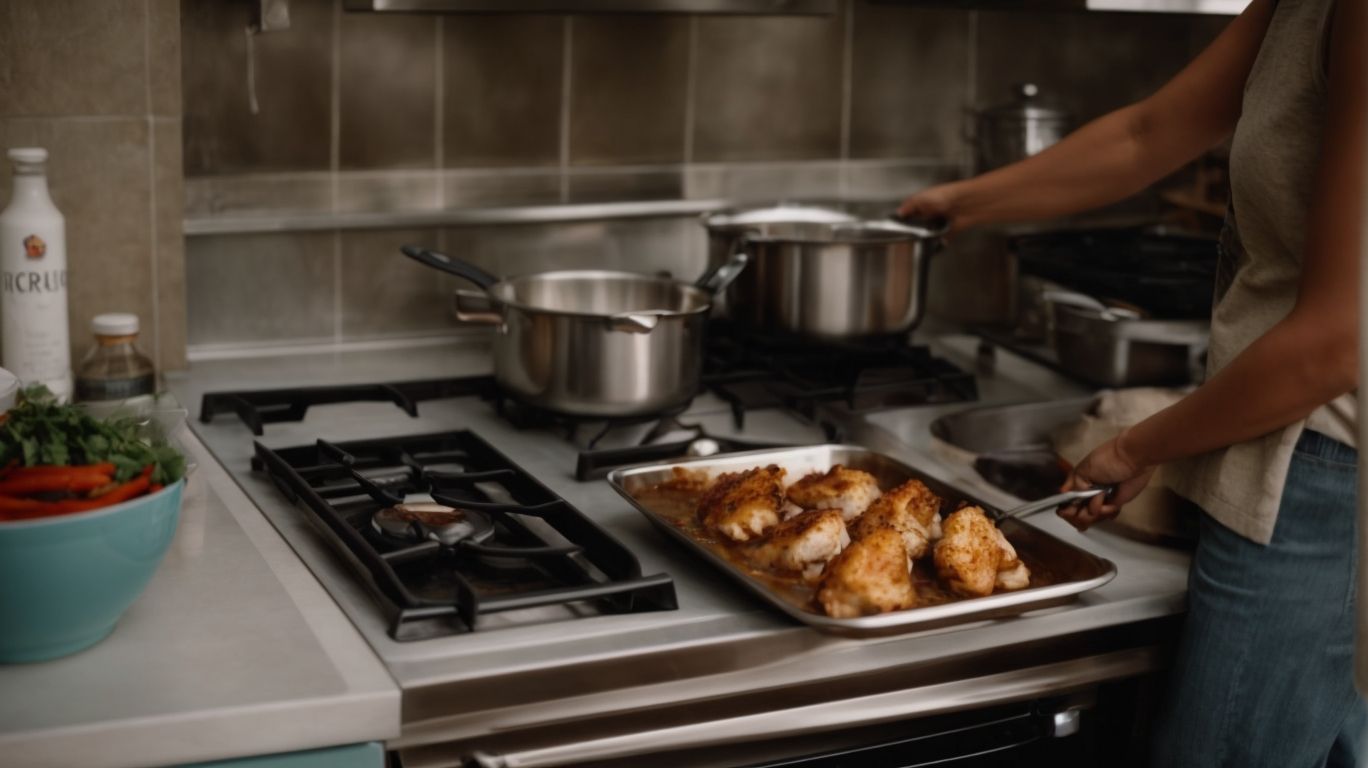
Credits: Poormet.Com – Justin Roberts
Key tips for safely cooking chicken after gallbladder surgery include using a food thermometer to ensure proper doneness, avoiding cross-contamination with other ingredients, and correctly storing leftovers to maintain food safety.
When cooking chicken post-gallbladder surgery, it is crucial to double-check the internal temperature to reach at least 165°F for safe consumption. This prevents any risks of foodborne illnesses that could be detrimental during the recovery period.
Practicing stringent hygiene measures such as washing hands, utensils, and surfaces thoroughly can help reduce the chances of bacterial contamination.
Leftover management is equally essential, as storing chicken properly in airtight containers and consuming it within a few days can prevent spoilage and maintain freshness.
Use a Food Thermometer
Using a food thermometer in chicken preparation post-gallbladder surgery is recommended to ensure the poultry reaches the safe internal temperature, promoting optimal food safety practices advised by healthcare providers and aligning with gallbladder-friendly recipe requirements.
By adhering to the recommended safe cooking temperatures, individuals post-gallbladder surgery can effectively reduce the risk of foodborne illnesses, which can be particularly risky during the recovery phase. Professionals in the healthcare field emphasize the importance of precision in temperature monitoring to prevent any potential digestive discomfort or complications. Accurate temperature monitoring is not only crucial for health reasons but also to ensure the tenderness and taste of the cooked chicken, which can significantly impact the overall post-surgery dietary experience.
Avoid Cross-Contamination
Preventing cross-contamination during chicken preparation post-gallbladder surgery is essential to avoid foodborne illnesses, aligning with guidelines for clear liquid or BRAT diets and ensuring the safety of dishes like baked chicken breasts.
Careful handling of raw chicken and cooked chicken dishes is crucial in reducing the risk of bacterial contamination, especially in individuals recovering from gallbladder surgery. Strict adherence to hygiene practices, such as washing hands thoroughly, using separate cutting boards for raw meat, and properly sanitizing surfaces, plays a significant role in preventing infections.
It’s also vital to maintain dietary compliance post-surgery, focusing on low-fat and easily digestible options for optimal recovery. By following recommended food choices and cooking methods, individuals can promote healing and reduce the chances of complications related to gallbladder removal.
Properly Store Leftovers
Properly storing chicken leftovers post-gallbladder surgery is crucial to maintain freshness, nutrient integrity, and food safety standards, particularly for individuals focusing on dietary fiber intake and seeking guidance from a dietitian, with options like honey garlic salmon to diversify meal choices.
When storing cooked chicken after gallbladder surgery, it is recommended to refrigerate the leftovers promptly in shallow containers to ensure even cooling and prevent bacterial growth. Proper refrigeration helps maintain the quality and safety of the chicken, preserving its taste and texture. Consider labeling containers with the date of storage for easy tracking of freshness. To further enhance the nutrient profile, mix leftover chicken with colorful veggies for added fiber and vitamins, creating a balanced meal that aligns with nutritional counseling guidelines.
Frequently Asked Questions
Can I eat chicken after gallbladder surgery?
Yes, you can eat chicken after gallbladder surgery. However, it is important to follow a few guidelines to ensure proper digestion and minimize discomfort.
What type of chicken is best to cook after gallbladder surgery?
Skinless, boneless chicken breast is the best option to cook after gallbladder surgery, as it is low in fat and easy to digest.
How should I prepare the chicken before cooking it?
You should trim off any visible fat and remove the skin from the chicken breast before cooking. This will help reduce the amount of fat and make it easier for your body to digest.
What cooking methods are recommended for chicken after gallbladder surgery?
Steaming, baking, or grilling are the preferred cooking methods for chicken after gallbladder surgery. Avoid frying or sautéing in oil, as it can be difficult for your body to digest.
Can I season my chicken after gallbladder surgery?
Yes, you can season your chicken with herbs, spices, and other low-fat flavorings after gallbladder surgery. Just be sure to avoid using excess oil or high-fat sauces.
Are there any other foods I should avoid when cooking chicken after gallbladder surgery?
It is best to avoid high-fat foods such as fried foods, creamy sauces, and processed meats when cooking chicken after gallbladder surgery. Stick to a low-fat, high protein diet to aid in the healing process.

